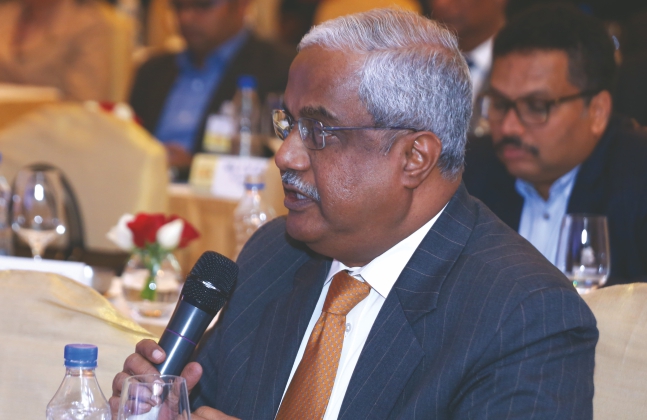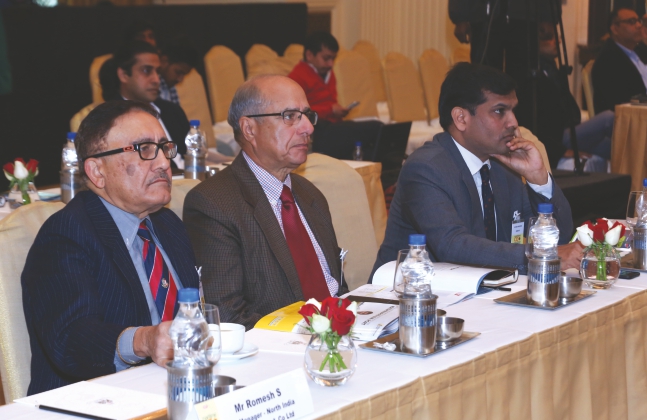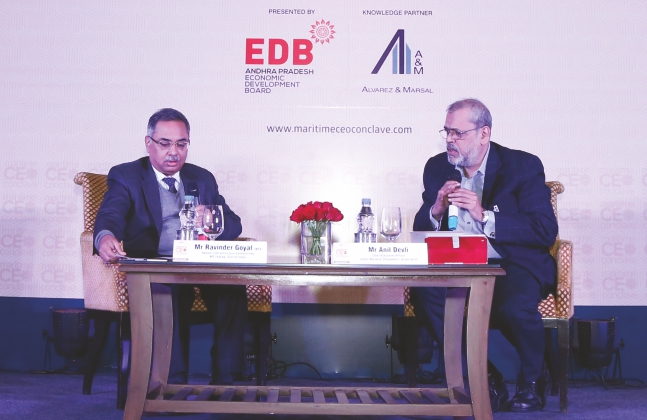Appropriate policy framework and favourable regulations form the corner stone for the growth of any sector and logistics is no different. At the CEO Conclave, Ravinder Goyal, IRTS, Adviser (Infrastructure Connectivity), NITI Aayog, in conversation with Anil Devli, CEO, INSA, deciphers the role of Niti Aayog – a think tank driving policy formulation in India, in promoting multimodal logistics.
Anil Devli: What is your role as Advisor, Infrastructure Connectivity at NITI Aayog and what is the vision of Niti Aayog as far as maritime sector is concerned?
Ravinder Goyal: There are a lot of misconceptions about the role of Niti Aayog in the transport sector. Niti Aayog has evolved from the earlier role of planning commission which was basically appraising the state’s plans and the ministries plans and regulating the funding also. Subsequently when Niti Aayog was transformed into an organisation, the role given to Niti Aayog is that of a think tank and an action tank. The whole idea is that it should be able to drive the policy of India. To this end Niti Aayog for the past three years organises workshops, writes policy papers, consults various stakeholders across industries. Focusing particularly on multimodal transport, the mandate for Niti Aayog is:
- As there are sectorial imbalances and modal imbalances in the transport sector, the freight has shifted from rail to road. Earlier the road share used to be much less than 14-15 per cent at the time of independence, now the road’s share is almost 67-68 per cent. this has its own drawbacks in the sense railways despite being the economical mode of transport is carrying much less freight than what it should be carrying. The result is congestion on roads, average speed has decreased and cost of logistics has gone up. One mandate for Niti Aayog is to correct the imbalances in the modal mix. For instance, coastal shipping is currently playing a very minor role in logistics. The capacity at the ports is growing at the rate of 16 per cent annually, whereas the cargo is only growing at 5 per cent. The port capacity is still underutilised, so there is lot of scope for coastal shipping which can correct these modal imbalances and ultimately cut down the logistics cost.
- The second mandate is to cut down the logistics cost. The logistics cost in India is almost 14 per cent of the total GDP and in a product the cost of logistics is again 14 per cent. Of this 14 per cent 40 per cent is the transportation cost. Any policy intervention which can cut down this cost will be the focus of attention and mandate of Niti Aayog.
- Niti Aayog has been entrusted with the task of making a regulatory reform bill for the infrastructure sector. It is an umbrella bill announced in the last budget, so Niti Aayog would be driving the bill for correcting the regulatory framework. For instance, when I was in CONCOR, we were struggling with the formulation of Bill of Lading. In multimodal transport there is only one document that carries the cargo, but unfortunately that is not happening for the past 20 years. Any policy initiative which can correct these aspects would be the mandate of Niti Aayog.
Another mandate for Niti Aayog is ease of doing business. The study that we had done at JNPT has actually reduced the transit time for export and import of containers and now a similar study is being conducted for Chennai port as well. The focus of attention in multimodal transport will be correcting the regional and modal imbalances, to cut down the cost of logistics, regulatory framework and ease of doing business. We have formed think tanks and also invite suggestions from the industry in this regard.

Anil Devli: In modal shift of cargo has any plan or thought been formulated in Niti Aayog to ensure that each mode of logistics is put to optimum use?
Ravinder Goyal: We are trying to study the movement grid of every commodity. Under the Sagarmala project McKinsey has already done a study in this regard. They have studied the movement of every commodity and analysed whether it will be beneficial to transport it by rail or road. The railways is already studying the possibilities for bringing the freight cost down. Till now all the efforts made in this regard are based on market experience, but a concrete study needs to be conducted to understand the flow of every commodity. For instance, Maruti has recently started transporting cars through inland waterways. If this modal shift is based on some hard facts or studies then it would be more beneficial. One way of doing it is mapping the flow of each commodity and use the insights in policy intervention.
Anil Devli: Getting the study done for each commodity can be very cumbersome. Would Niti Aayog be willing to use the case studies already done by others in this regard for the thought process?
Ravinder Goyal: Why not! Niti Aayog on its own has not done any study, they are done through consultants or industry. So any study done by industry which is based on their experience is always welcome. Of course, we will get the study vetted by industry experts again and can be used to drive the policy formation from Niti Aayog.

Anil Devli: One of the things you touched upon is public consultation and the need for formation of groups. Is it possible that the 8 or 9 associations that represent the interest from road till the sea transport volunteer to form working group to interact with Niti Aayog regularly by submitting suggestions?
Ravinder Goyal: Recently Niti Aayog has come up with a fifteen years agenda and the action plan for the next three years. So we held wider stakeholder consultation based on which the policy paper is formulated. What you are suggesting is absolutely right. If you can suggest me formation of a group then I am willing to take it up.
Anil Devli: In your short stint have you been able to take a view of Inland Waterways and personally do you have any idea about the direction in which the thought process and policies of the government are proceeding?
Ravinder Goyal: Currently the share of inland waterways is very miniscule, hardly 1 or 2 per cent in the overall cargo movement. Unfortunately there are too many authorities working in the inland waterways sector, so we need to have a sort of convergence among the authorities. The programme of Ministry is in-progress and Niti Aayog is helping in that to increase the share of inland waterways.
Anil Devli: Does Niti Aayog also involve itself in issues, for example there used to be a specialised financing organisation to support buying of ships, which over the period got lost. We have been looking for specialised financing organisation as well. Is this something Niti Aayog would be concerned about?
Ravinder Goyal: All the policies, be it relating to formulation of a particular organisation, come to Niti Aayog for approval. We study the policy and if required hold consultation with expert group as well.







